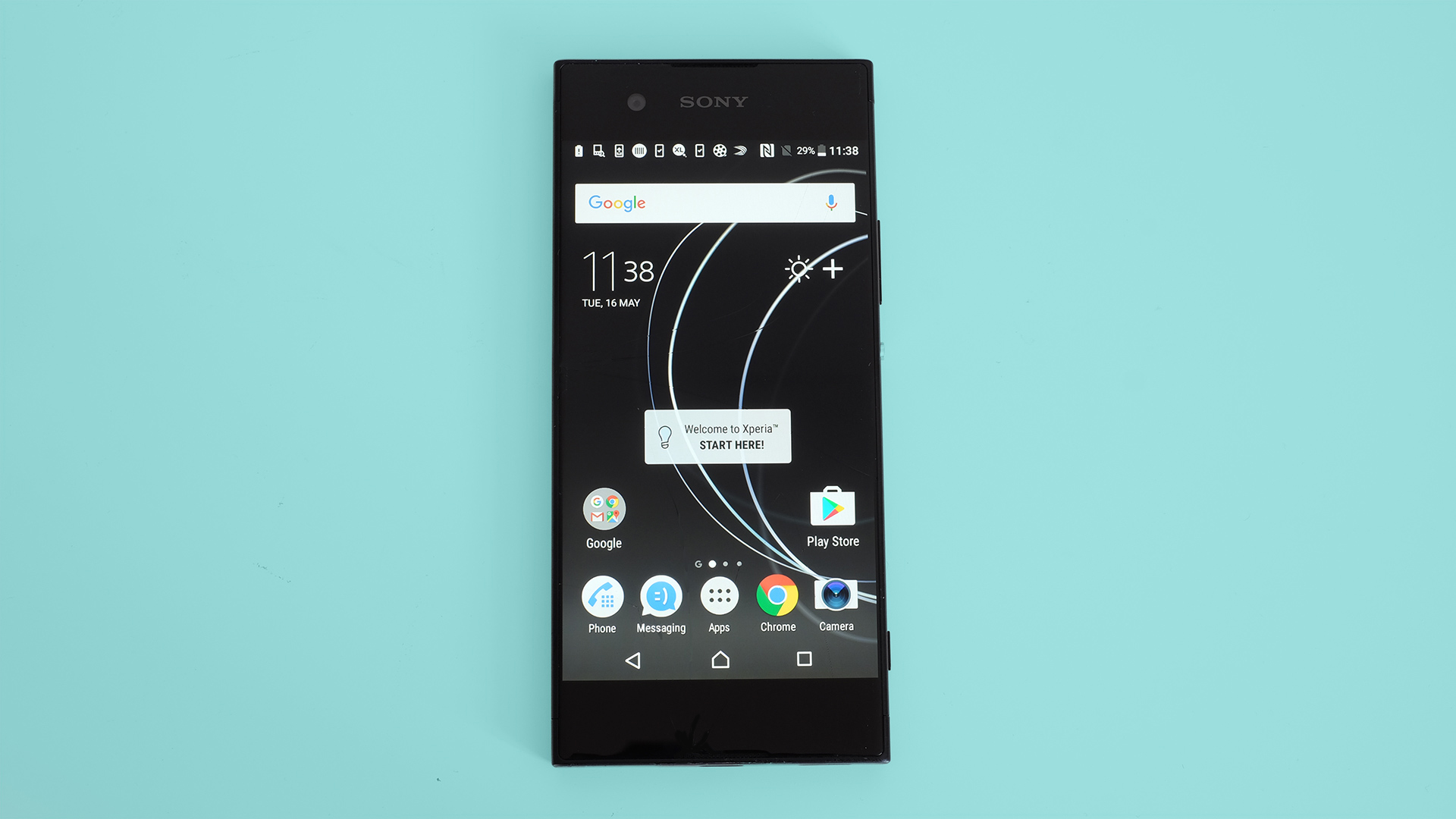Why you can trust TechRadar
Battery life
- Fair but not great battery life
- USB-C charging
- Feature phone-like mode for battery dire straits
The Sony Xperia XA1 has a worryingly small battery unit, just 2,300mAh, although thanks to the 720p resolution screen the phone’s stamina is acceptable. Conventional, rather than a disaster.
Playing back a 720p test video for 90 minutes, the Xperia XA1 loses 27%. That’s significantly worse than the Moto G5, which loses 22% in the same test.
The message is pretty clear: having a 720p screen doesn’t entirely make up for the low-capacity battery. However, the bright backlight does not help either. We perform these tests at maximum brightness, and on the Xperia XA1 that’s pretty bright.
With real life use you’ll be able to get a full day of moderate use between charges. However, we tend to oscillate between moderate and heavy use, and like this the Sony Xperia XA1 struggles a little. Add a few hours of podcast streaming and the battery is likely to conk out at or just before bedtime.

However, it seems better than last year’s Xperia XA, perhaps because the chipset is more efficient.
It has worse stamina than the Moto G5, if not by a truly dramatic margin. There is a mode to help out, too, called Stamina. This restricts background data and switches off features like GPS and (photo/video) Image Enhancement to lower power use.
There’s also an Ultra Power Saver mode, but as this effectively makes the Sony Xperia XA1 a feature phone, you won’t want to use it much.
The phone uses a USB-C socket to charge, giving it another modern design edge to laud over the Moto G5, which uses micro USB.
Camera
- High-res camera provides good results for the price
- …although images look scrappy up close
- Limited video modes, no 4K
Not every part of the Sony Xperia XA1 is a winner, but its camera is among the very best at the price. The rear camera uses a 23MP sensor of 1/2.3-inch size, the same scale as some dedicated compact cameras.
For a phone at this price, detail and general image quality is excellent. We had a chance to shoot alongside the Sony Xperia XZ Premium, and while the results were a little different, with the Premium creating warmer-looking shots, you’d never guess one phone was almost three times the price of the other.
The Sony Xperia XA1 also benefits from Sony’s super-aggressive brightening of night photos. While the camera isn’t properly stabilized, which is essential for truly great night shots in a phone, it’ll make night shots clearer than most phones at the price. Just don’t expect amazing detail at night too.
The value/price of Sony’s 23MP sensors must be dropping rapidly, because this is a pretty low-cost phone for one with so many megapixels.

After all that praise, we have to deal with the problems with the Sony Xperia XA1’s images. There are plenty, most of which were present in Xperia flagships of years gone by.
First, the processing style is not good. The Xperia XA1 uses far too much sharpening, making fine details look stressed and unnatural up close. Image quality also goes down the toilet towards the extreme edges of the frame, turning mushy.
The camera struggles with close-up macro-style shots too. It just can’t focus that close, and the autofocus tends to favor the background at times even when the subject is in focus range. This is common in affordable phones, though.

The closer you look, the more you realize the character of the photos just isn’t that hot, and the Xperia XA1 could make much better use of on-the-fly dynamic range optimization. However, where these problems were worth screaming about in the Sony Xperia Z3 and Xperia Z5, they are so much less problematic in a phone this much cheaper.
Despite the critique, we remain impressed.
You pay for all those megapixels on the video side, as the Sony Xperia XA1 can only shoot at up to 1080p resolution, and at only 30fps at that resolution. It’s likely this is all the Helio P20 CPU’s image signal processor can cope with when having to juggle all that sensor data.
Around the front, the selfie camera is much less impressive. It has an 8MP sensor and produces typically budget-looking images. Unless lighting is good there’s quite a lot of fuzzy noise, and that classic ugly character to Sony’s processing.
We shouldn’t be too harsh, though, as we praised what is likely exactly the same front camera in last year’s Xperia XA. With reasonable lighting, you can take a decent selfie, but standards in selfie cameras have advanced in the last year.
Camera samples








Current page: Battery life and camera
Prev Page What's it like to use? Next Page Verdict and competitionAndrew is a freelance journalist and has been writing and editing for some of the UK's top tech and lifestyle publications including TrustedReviews, Stuff, T3, TechRadar, Lifehacker and others.

